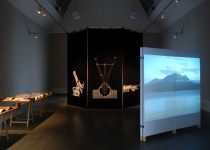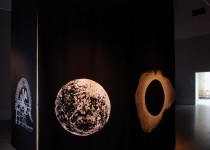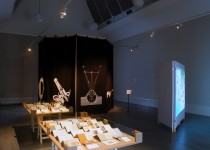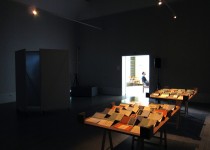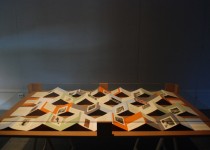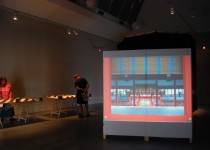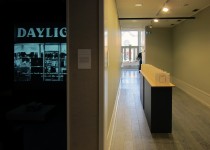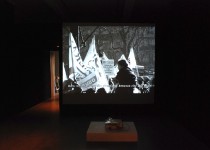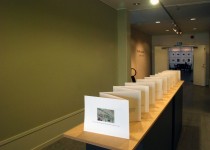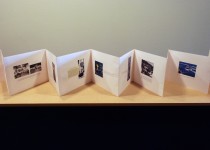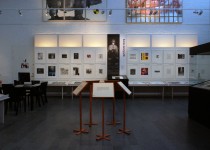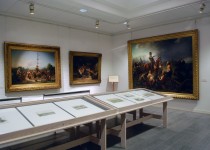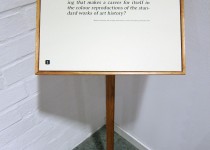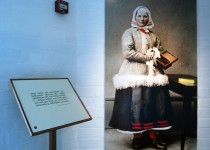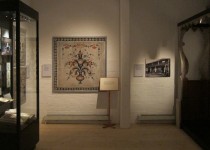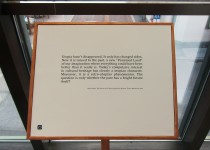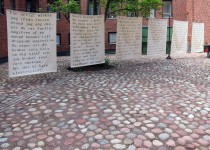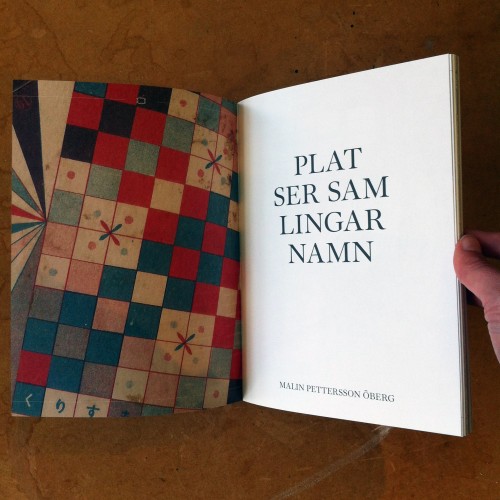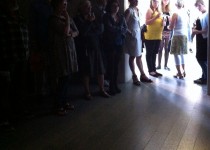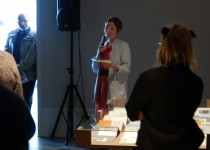Dalarnas Museum, Falun: Platser Samlingar Namn, 15/6-15/9 2013
During the summer the exhibition Platser Samlingar Namn by Malin Pettersson Öberg takes place at Dalarnas museum in Falun, Sweden.
Most welcome!
The project Platser Samlingar Namn – which consists of an exhibition and a publication – can be described as an attempt to develop and interconnect a number of important subjects in Malin Pettersson Öberg’s artistic work. A series of art works – installations, printed matter and film – is like an essay spreading out in the museum’s various rooms. The pieces raise questions about how we define and relate to places, how identity is constructed, how travels and displacement can open up for new ways of understanding our surroundings. They ask questions about collecting and the museum, and about how vision and science has been developed and limited by conceptions in their own time. With a background in Falun and a desire to depart from a here and now to create a sense of presence and simultaneity, Malin Pettersson Öberg uses Dalarna and Dalarnas museum as a backdrop and point of departure for the project. The museum’s collections and Dalarna’s identity is explored in the work Utan titel (Dalarna) from 2013, while other works describe remote places and cultures. In this way, an anthropological theme is proposed, where reflections and comparisons between different places, identities and cultures are enabled. The idea behind the publication Platser Samlingar Namn has been to create an object in between a catalogue and an artist’s book. A printed matter containing documentation as well as reference material related to Malin Pettersson Öberg’s work. The publication has been produced with the support of Längmanska kulturfonden and Dalarnas museum, in collaboration with the designer and producer Kajsa Pontén and the writers Karl Steinick, Camilla Larsson and Elina Suoyrjö. Anne Seppänen from Dalarnas museum has curated the exhibition.
Background
In the introduction to the film Notebook on Cities and Clothes (Wim Wenders, 1989) Wenders reads the following: You live wherever you live, you do whatever work you do, you talk however you talk, you eat whatever you eat, you wear whatever clothes you wear, you look at whatever images you see… You’re living however you can. You are however you are. ”Identity”… of a person, of a thing, of a place. […] What is it, identity? Wenders’ work is an essayist and diary-like film travelogue, in which the connections between cities, clothes, identity and the medium of film in the digital age are explored through a portrait of Yoshi Yamamoto. Similarly, Malin Pettersson Öberg explores concepts of identity, belonging, place and collecting in the project Platser Samlingar Namn (Places Collections Names), with a point of departure in the region and museum of Dalarna.
In an anthropological way, the project revolves around (the description of) places and cultural/national identity, as well as around collecting and the reorganization of collected material. Part of the research has been dedicated to collecting as a phenomenon, and its underlying functions and mechanisms. Further, a local perspective is in focus, reflecting on the particular collections of Dalarnas museum and the continuous construction of the identity of the region. Several of the existing works that are included in the exhibition are portraits and descriptions of places and nationality, for example the film Paris – An Orbit Portrait (2011) and the publications Japan – A Borrowed Scenery and In the Near Past (2012). The theme recurs in the new piece Utan titel (Dalarna), where a number of textbased signs spread out in the museum’s collections. The work interacts with the museum’s existing environment and aesthetics, and aims at recontextualizing the experience of being in the museum. It brings together a selection of quotes written about collecting and the Dalarna identity, and opens for reflections in many directions. The other new piece – Att byta namn (En alternativ reseskildring) – is presented in Västra Salen together with the pieces Stereoskopisk scenografi / Kronologi (2011/2012).
Listen to Sveriges Radio’s interview with Malin Pettersson Öberg (SE, starts at 07:45)
Download the exhibition folder (SE)
Photographs: Sébastien Berthier and Malin Pettersson Öberg
More information about the publication Platser Samlingar Namn can be found here
